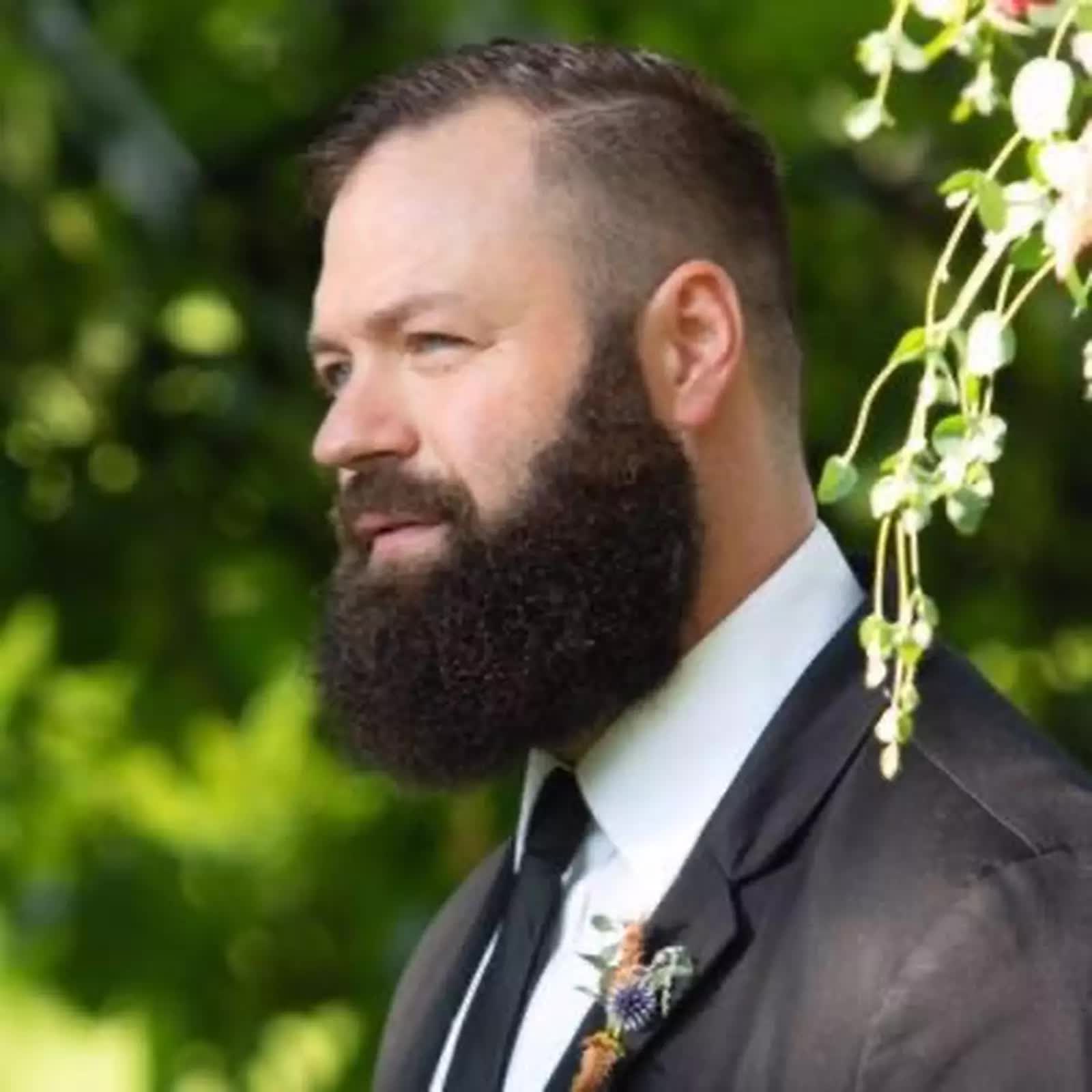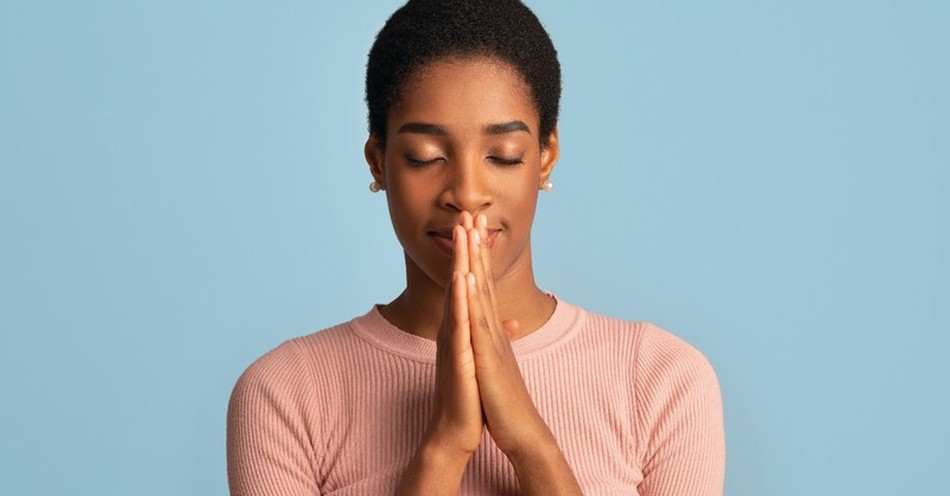This past Sunday I heard a preacher say a phrase that I heard at least a thousand times: "Everybody, please bow your heads and close your eyes." This posture of prayer is so ubiquitous that one might assume that it has always been the posture of prayer or that it is the only acceptable way of praying.
Is There a Correct Posture of Prayer?
The fact is it absolutely is a good way to pray for a few reasons. It helps us block out external distractions, it helps us focus on the task at hand, it can help us be more reverent as opposed to casual.
It can fight any anxiety we are feeling and calm us down (especially if we take deep, controlled breaths), and it can help increase the enjoyment and even intensity of the moment we are in (like closing our eyes and feeling the ocean breeze on our face).
Pastors often ask their congregation to pray in this way because it is in public, and it is one helpful way to block out the distractions from everyone else around.
And you could argue that praying with your head bowed and eyes closed is the most appropriate way to pray when specifically confessing sin.
That is what the "tax collector" did in Luke 18:10-14. Jesus said that he "would not even lift up his eyes to heaven, but beat his breast, saying, ‘God, be merciful to me, a sinner!’"
And because of the position of his heart (which was reflected in his physical disposition), Jesus said that the man "went down to his house justified." Jesus then used this story to explain that "For everyone who exalts himself will be humbled, but the one who humbles himself will be exalted.”
But being quiet, bowing your head, and closing your eyes is certainly not the only way to pray — far from it! Because praying is similar to a conversation with a friend for believers, there is no wrong position or posture to pray, as long as our hearts are right with God.
Paul gives us the impression in 1 Thessalonians 5:17 that we can (and should) pray anywhere, everywhere, and no matter what we are doing when he instructs believers to "pray without ceasing."
Make sure that nobody pays back wrong for wrong, but always strive to do what is good for each other and for everyone else. Rejoice always, pray continually, give thanks in all circumstances; for this is God’s will for you in Christ Jesus (1 Thessalonians 5:16-18).
I remember reading a book as a child about praying while doing a handstand — and if that helps you focus and conversate with your heavenly father, then give it a shot!
Zac Hicks (the author of the book The Worship Pastor) said that there is historical evidence that the early Christians often did not close their eyes when they prayed (no doubt following in the same pattern set by Jesus's prayer life).
One example of a completely different prayer posture from the typical eyes-closed way is seen in John 17 when Jesus prayed his "High Priestly prayer" by lifting his eyes up to heaven and talking to His Father out loud.
What Is the Significance of Prayer?
As the ESV Study Bible notes, this head-up, eyes-open position of prayer seemed to be customary for Jesus (we also see it clearly in Mark 7:34). This is the same impression we get when Jesus told his disciples to "rise and pray that you may not enter into temptation” in Luke 22:46.
We can also see this posture exemplified in Psalm 123:1 when the Psalmist wrote, "To you I lift up my eyes, O you who are enthroned in the heavens!" In this example, we can see how eyes lifted up can remind us of the glory and sovereignty.
Similarly, if we are praying for someone across the table from us, opening our eyes and looking at them can help us visualize them and their needs better.
What is exponentially more clear than our physical prayer posture in Scripture is the posture or condition of our hearts.
Throughout Scripture, we find that our prayers are effective and unhindered when we pray:
- Humbly and not hypocritically (Matthew 6:5-6);
- Intentionally and not vainly;
- Repetitive (Matthew 6:7), not anxiously but with thanksgiving (Philippians 4:6);
- Honorably (especially for husbands) (1 Peter 3:7), with a broken and contrite heart (Psalm 51:1);
- Righteously (Proverbs 15:29), believing (Mark 11:24), and more.
Lastly, we should note that how we pray says so much about what we believe because as Jesus said, the words we use (including our prayers) comes out of the "abundance" or overflow of our heart (Matthew 12:34).
In Mike Cosper's book, Rhythms of Grace, he uses an ancient Christian Latin phrase "lex orandi, lex credenda," which essentially means that the way in which we pray gives us a window into what we truly believe.
Therefore, if we find ourselves praying in a way that is unhelpful or insufficient then we have a God who would love to teach us a better way to pray! The main way we can learn to pray is through studying Scripture and applying it.
Prayer in Scripture
Studying Jesus's prayers throughout the gospels gives us the clearest ways that we can talk to our heavenly Father. Jesus’ model of prayer in Matthew 6 (often called "The Lord's Prayer) gives us simple language and structure for our prayers, and the prayers of the saints throughout Scripture give us other models to borrow from.
But not only can we learn from others' prayers in Scripture, but we can also actually use verses that we have read or memorized in our prayers to provide helpful wordage and phrases in our prayers when we do not know the words to say.
Another part of Scripture to study when learning to pray or improving our prayer life is the Book of Psalms.
Although we often think of Psalms as just songs, many of them are prayers directed to God. In fact, all of the songs that believers have been singing for centuries (including songs still being written today) can be incorporated into our prayer language — especially the actual “hymns” written in praise to or about God.
For example, we can use the lyrics of the song "Always" by Kristian Stanfill to pray:
"My foes are many, they rise against me, but I will hold my ground... I lift my eyes up My help comes from the Lord."
In the same way, we can use the lyrics of "Come Thou Fount of Every Blessing" by Robert Robertson to pray:
"Prone to wander, Lord I feel it Prone to leave the God I love Here's my heart, oh, take and seal it Seal it for thy courts above"
So, to answer the question of "do I have to close my eyes when I pray" — the answer is no. You can pray any way you want — so just pray!
For further reading:
What Is the Purpose of Singing Hymns?
Why Must We Fix Our Eyes on the Lord?
Why Is it Important to Empathize, Exhort, and Pray?
What Is the Real Purpose of Kneeling in Prayer?
Does God Expect Us to Pray without Ceasing?
Photo Credit: ©iStock/Getty Images Plus/Prostock-Studio

This article is part of our prayer resources meant to inspire and encourage your prayer life when you face uncertain times. Remember, the Holy Spirit intercedes for us, and God knows your heart even if you can't find the words to pray.
Prayers for Healing
Morning Prayers
Prayers for Family
Prayers for Surgery
Prayers for Strength
Night Prayers Before Bed
Prayers for Protection
The Lord's Prayer: Our Father



